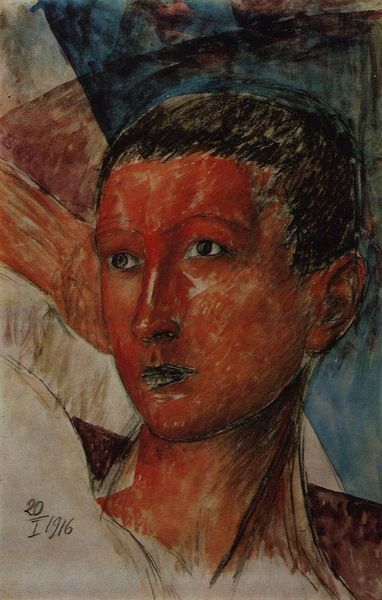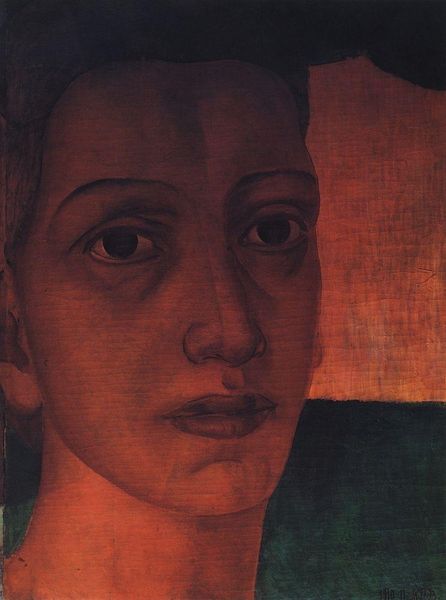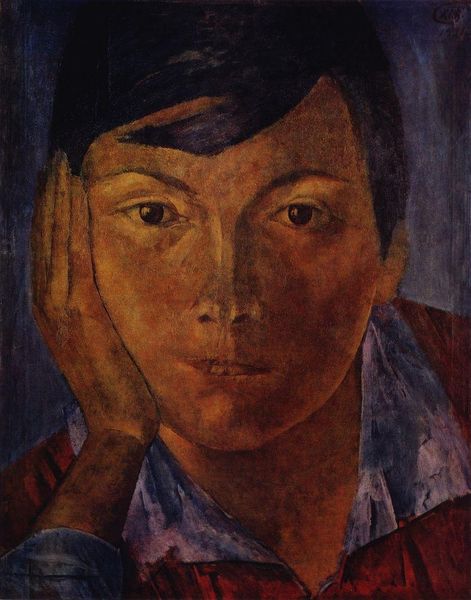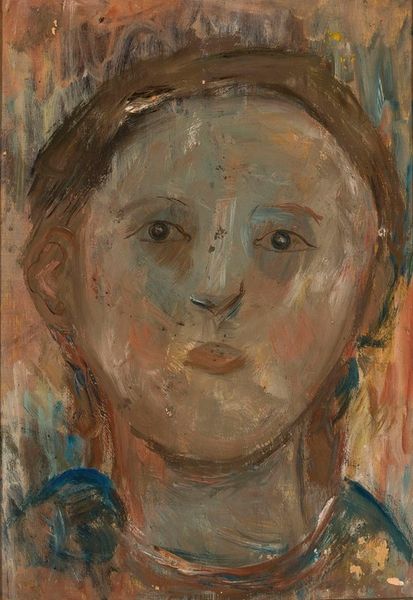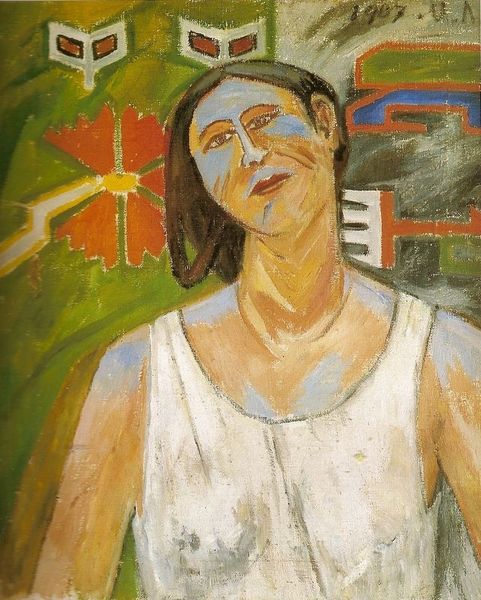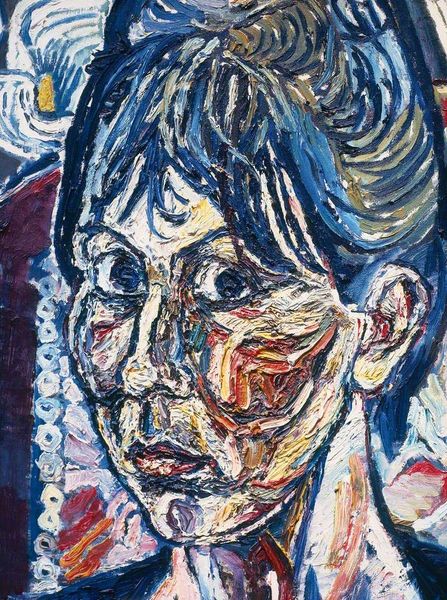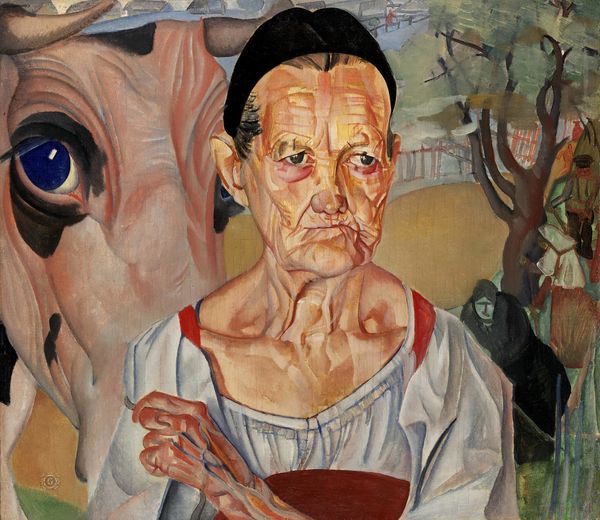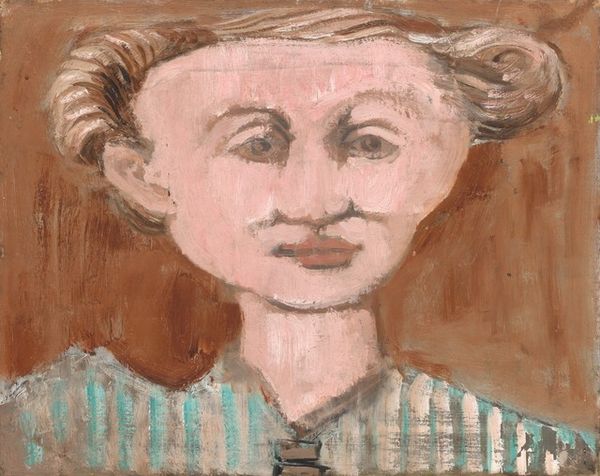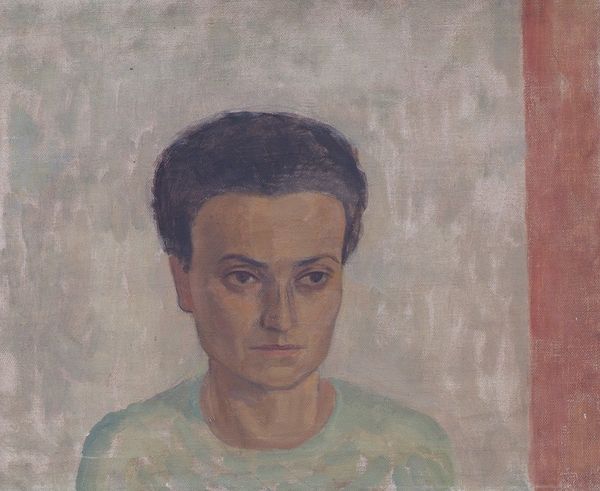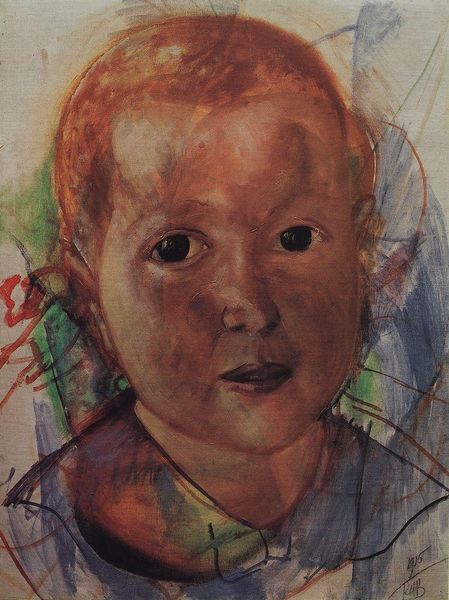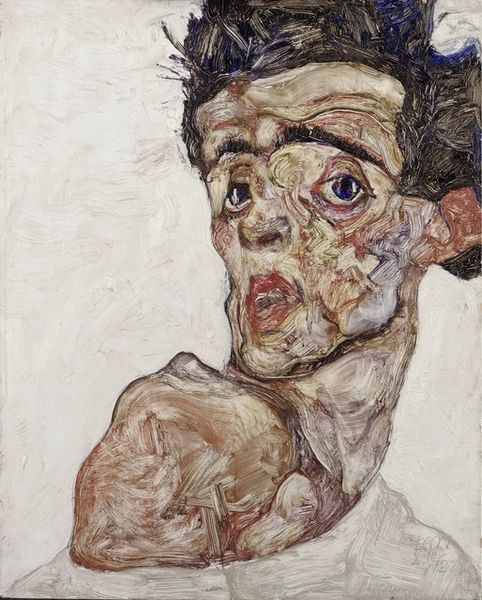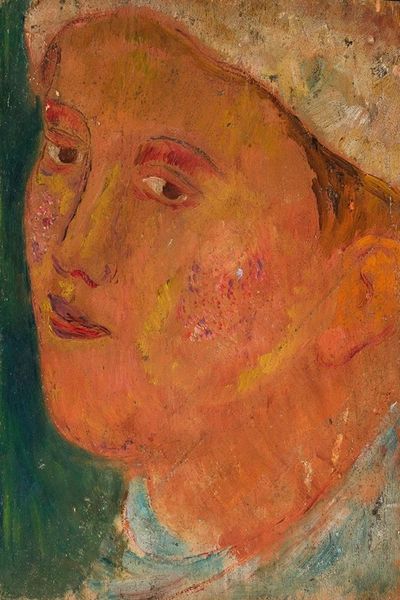
painting, oil-paint, impasto
#
portrait
#
painting
#
oil-paint
#
figuration
#
oil painting
#
impasto
#
russian-avant-garde
#
portrait art
#
modernism
#
realism
Copyright: Public domain
Curator: This is Kuzma Petrov-Vodkin's "Portrait of Grekova (Kazachka)," rendered in oil paint in 1912. It's an early example of his distinctive style, wouldn't you say? Editor: Indeed. Immediately, the intense gaze strikes me. It's almost confrontational, a challenge to the viewer, combined with this rather muted palette, it lends a certain austerity. Curator: The sitter, a woman artist herself, Evgenia Grekova, is framed within a period of complex sociopolitical shifts. Note the title, "Kazachka," suggesting a connection to Cossack identity. Petrov-Vodkin, ahead of his time, challenged traditional portraiture, giving Grekova agency and highlighting the significance of marginalized ethnic groups in Imperial Russia. Editor: Yes, I see the echoes of the iconographic tradition in the stark frontality and those almost unnervingly direct eyes. Icons were designed to be points of contact, spiritual windows. Is Petrov-Vodkin trying to do something similar, to present Grekova not just as an individual but as an embodiment of something larger? Curator: Absolutely! He bridges realism and nascent modernism. His "spherical perspective," evident here in the subtly distorted plane of the face, encourages a more multifaceted reading of the sitter and challenges viewers. This was around the time the Russian Avant-Garde were rethinking every element of art to create something entirely new. Editor: And that gaze! In terms of symbolic language, the eyes have always been considered the windows to the soul. Hers possess such a focused determination; there's nothing submissive about it. This diverges sharply from the often passive role assigned to women in much art of that era. Curator: It disrupts established gender and ethnic hierarchies. He pushes the limits of representation by allowing Grekova self-possession as she engages the audience in dialogue on equal terms. Editor: This single image manages to be so evocative—it contains elements of tradition while bravely anticipating the future. Curator: A powerful statement. A painting that encourages continued exploration. Editor: Precisely, I think the painting presents itself as a powerful reflection, daring to bridge eras and ideas through artistic means.
Comments
No comments
Be the first to comment and join the conversation on the ultimate creative platform.
